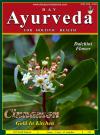 India grows a large variety of fruits belonging to tropical and temperate region. Morphologically fruit is the seed bearing portion of the plant and consist of ripened ovary and its contents.
Citrus fruits are supposed to be native of eastern and southern Asia. Citrus plants are cultivated in such places where there is sufficient amount of moisture.
India grows a large variety of fruits belonging to tropical and temperate region. Morphologically fruit is the seed bearing portion of the plant and consist of ripened ovary and its contents.
Citrus fruits are supposed to be native of eastern and southern Asia. Citrus plants are cultivated in such places where there is sufficient amount of moisture.
Some common citrus fruits are Chaktora (Citrus maxima), Matulung (Citrus medica), Kaghzi nimbu (Citrus aurantifolia), Jambeer (Citrus) lemon, Mausambi (Citrus sinensis) and Narangi (Citrus aurantium).
According to Ayurveda all citrus fruits are good appetizer and can be given in loss of appetite. Citrus fruits are used to treat nausea, vomiting, motion sickness and excessive thirst.
Citrus fruit abundantly used in Ayurveda is Matulunga. Commonly it is known as Bijapura or Bijora nimbu. In English it is called Citron. Botanically it is identified as Citrus medica.
It is found wild in hilly areas especially of himachal Pradesh, Uttrakhand, Sikkim, Assam and also in hills of Southern India.
It is an evergreen shrub with large oblong, obovate or somewhat irregulary shaped fruit. Citron is mentioned in Ayurvedic texts to treat various ailments.
Piece of Citron fruit mixed with honey and rocksalt is advised to be kept in mouth for removing tastelessness.
Patient suffering from hiccough should be administered Citron juice with honey and salt
Its juice mixed with parched paddy, sugar, honey and long pepper is considered as best remedy for vomiting.
Citron is considered as beneficial for heart (cardio tonic). Its juice mixed with rocksalt should be given to relive cardiac pain.
Citron juice mixed with ginger and black pepper is to be rubbed on teeth and tongue and then gargled with hot water for alleviating anorexia during pregnancy.
In earache ear should be filled with juice of Citron.
Citron juiced mixed with Yava Kshar and honey removes colic pain.
Not only fruits but other parts of the plant are also equally useful. Root is used in Vomiting, colic, dental caries, calculus etc. Flowers and buds are useful in internal bleeding.
It contains considerable amount of essential vitamin C (ascorbic acid) as well as fruit acids. It is used in the preparation of juices, pickles, squashes and other canned products. The oil distilled from the peel is used in confectionaries, pharmaceuticals, toilet preparations, cosmetics and perfumery.
Vitamin C present in it acts as an anti-ageing agent. It is used in scurvy (swollen and bleeding gums), pin-pointed subcutaneous bleeding and impaired wound healing, anemia and growth retardation. Though vitamin C does not enhance normal healing but it has been found to accelerate healing of bed sores and chronic leg ulcers. In post injury period requirement of vitamin C is increased. Vitamin C present in it enhances absorption of iron from intestine thus it is helpful in the treatment of anemia. It is used to acidify urine is some kind of urinary tract infection. Severity of common cold symptoms may be somewhat reduced by intake of lemon tea.






 Dec 2024
Dec 2024
 May 2024
May 2024
 September 2022
September 2022
 April 2022
April 2022
 October 2020
October 2020
 Jan 2020
Jan 2020
 June 2019
June 2019
 January-February 2019
January-February 2019
 Augest-September
Augest-September
 April 2018
April 2018
 November 2017
November 2017
 June 2017
June 2017
 November 2016
November 2016
 September 2015
September 2015
 March 2015
March 2015
 July 2014
July 2014
 January 2014
January 2014
 July2013
July2013
 March 2013
March 2013
 May 2012
May 2012
 May 2011
May 2011
 Sep 2010
Sep 2010
 Jun 2010
Jun 2010
 Feb 2010
Feb 2010
 December 2009
December 2009
 August 2009
August 2009
 June 2009
June 2009
 Feb 2009
Feb 2009
 December 2008
December 2008
 October 2008
October 2008
 March 2008
March 2008
 July 2008
July 2008
 May 2008
May 2008